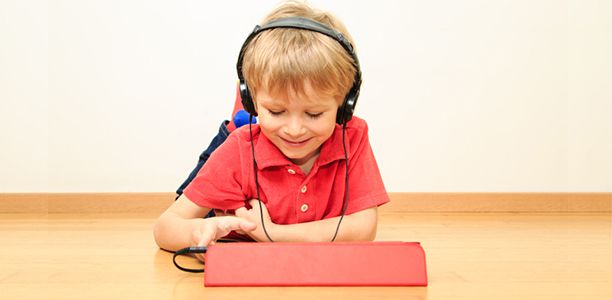Learning the ABCs has just become easier thanks to a new research-based and school-tested iPad app developed by Deakin University education and IT researchers and IT students.
The ‘A to Z Safari’ app is based on the latest research into memory and recall and helps children learn common-letter sound associations, a key building block of reading and writing-related literacies.
Following a successful three-month trial with Rollins Primary School’s Foundation classes in 2015, the school has become the first in Victoria to adopt the app as part of its 2016 curriculum.
And now, thanks to its recent release as a free download on the iTunes App Store, parents can give their kindergarten and Prep students a helping hand at home, too.
Mrs Maria Nicholas, Lecturer in Education in English Language and Literacy Education and project leader, explained that the project team focussed on delivering more than just another ABC-type app.
“Research tells us that the ability to common learn letter sounds is a key indicator of the ease with which a child will develop early reading skills so it’s important to help this process along where you can,” Mrs Nicholas said.
“We looked at the role that visual cues play in teaching ‘closed’, lower-order knowledge such as letter-sound associations and realised that for the app to be truly effective, it needed to interact with current discourse on memory studies.
“In particular, recent research into the effectiveness of form-taking pictures – as opposed to integrated pictures or disassociated cues – in aiding recall.
“For example, if you show a child a picture of a snake in the shape of the letter ‘s’ this kind of form-taking cue is much more likely to stick in a child’s mind than a picture of a coiled snake.”
Mrs Nicholas explained that the trial involved three Foundation classes at Rollins Primary School with two classes using different versions of the app while the third class didn’t use the app and relied on teacher-led instruction instead.
“Both versions of the app included a matching game, a memory game, and a testing area and featured the same games, sounds, background images, interface, voice-overs and functionality,” Mrs Nicholas said.
“The only difference between the two was the type of images used.
“One group of students used a version of the app which utilised integrated cues. This means that the letter (‘s’, for example) and the image (a snake) are wrapped around each other and woven together to take up the same space on the screen.
“Another group used a second version which utilised form-taking mnemonic cues where the image was designed to take on the shape of its corresponding letter. For example, the image of a snake would take on the shape of the letter ‘s’.
“The third group relied on teacher-led instruction where the teacher utilised disassociated images. This means that the snake was presented in its more natural form.”
Mrs Nicholas explained that the results from the trial were consistent with the research.
“Students were tested before and after the trial and we found that the form-taking version of the app was on par with teacher-led instruction when it comes to learning letter-sound associations,” Mrs Nicholas said.
“While the app is not intended to replace classroom activities, the positive results of the trial showed that it is a great way to reinforce what is being taught in class.
“The fact that the app compares favourably with teacher instruction means that parents and teachers alike can rest assured that when children settle in to play the app’s memory and match games independently, they’re using a quality teaching tool.”
Mrs Nicholas explained that the teachers at Rollins Primary School reported positive outcomes, too.
“We found that the self-directed nature of the app meant that when children were engaged in small group work activities, teachers were able to confidently ‘leave the students to it’ and instead spend more of their time engaging children in tasks that encouraged ‘open’, higher-order thinking,” Mrs Nicholas said.
“In an age where teachers’ time is constantly being stretched, tools like the A to Z Safari app can be a great way to make the most of the school day.”
The final version of the app uses specially-crafted images, created to take on the form of their corresponding letter, in fun and colourful matching and memory games. It also includes a password-protected testing area for parents and teachers to track children’s progress with an option to email the results directly to the parent or teacher. An alphabet strip can also be emailed and printed out for home or the classroom.
The free A to Z Safari app is available now fromiTunes.
(Source: Deakin University)
New app turns learning ABCs into child's play
- Advertisement -
Date Created: March 15, 2016










